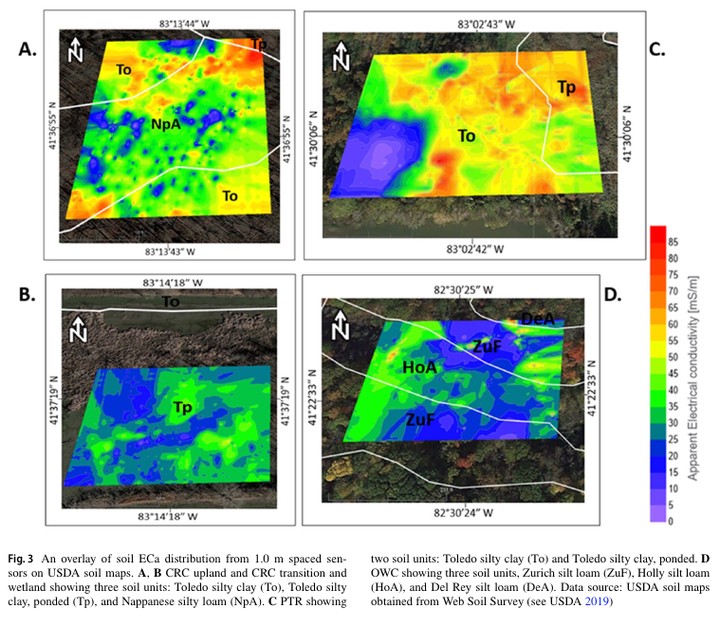Geophysical methods reveal the soil architecture and subsurface stratigraphic heterogeneities across land-lake interfaces along Lake Erie

Abstract
Purpose: The land-lake interface is a unique zone where terrestrial and aquatic ecosystems meet, forming part of the Earth’s most geochemically and biologically active zones. The unique characteristics of this interface are yet to be properly understood due to the inherently high spatiotemporal variability of subsurface properties, which are difficult to capture with the traditional soil sampling methods. Geophysical methods offer non-invasive techniques to capture variabilities in soil properties at a high resolution across various spatiotemporal scales. Methods: We combined electromagnetic induction (EMI), electrical resistivity tomography (ERT), and ground penetrating radar (GPR) with data from soil cores and in situ sensors to investigate hydrostratigraphic heterogeneities across land-lake interfaces along the western basin of Lake Erie. Results: EMI revealed high spatial heterogeneities in ECa distribution across the land-lake interfaces, with higher values in the wetland and transition zones compared to the upland zone. Soil ECa maps matched soil maps from a public database with the hydric soil units delineated as high conductivity zones (ECa > 40 mS/m). ERT and GPR showed vertical variation in soil properties with clear stratigraphic boundaries, and correlation of ERT profiles with lithologs from piezometers revealed the stratigraphic units of silt–clay and till sequence down to 3.5 m depth which are consistent with the surficial geology of the study area. Conclusions: These results validate the use of multiple geophysical methods for extrapolating soil properties and mapping stratigraphic structures at land-lake interfaces, thereby providing the missing information required to improve the earth system model (ESM) of coastal interfaces.